A 19th Century Candy Store Hidden Near Wall Street
Last week, I wrote about a World War I fighter plane on the roof of 77 Water Street. As it turns out, that’s just one of many surprises to be found around the building!
As I was waiting for my appointment to check out the plane, I took a few pictures outside the building from the street…
…then headed across to walk around the plaza. Again, nothing out of the ordinary stood out…
It was only as I approached the lobby that I noticed it, tucked into a back corner…
Was that…a turn of the century penny candy store??
Yes, and what’s more, it’s open for business!
I swear, I’ve walked by 77 Water Street a zillion times and never, ever noticed this. Like the rooftop plane, it’s a replica (I was hoping it’d been brought in from somewhere), but there’s something so great about finding something like this in the otherwise austere Wall Street area.
This is just one of the many whimsical embellishments created by building owners Robert and Melvyn Kaufman, who took over the William Kaufman Organization from their father in the 1950’s. I met Robert for my Wall Street Journal article last week, and it was a real pleasure talking about all these unexpected eccentricities.
One such example – note the numbers beside the Candy Store sign:
Now look at the addresses of various Kaufman properties: 77 Water Street; 757 3rd Ave; 767 3rd Ave; 777 3rd Ave; 437 Madison Ave. Apparently, 7 was their mother’s lucky number, and whenever possible, the Kaufmans try to acquire properties with a 7 in the address.
On one side of the candy store…
A Bo-Ko Cigars sign from the 1920’s (American Pickers fans might have noticed it on a recent episode):
An old Chesterfield sign and Ringling Bros. posters over the window:
Another really great surprise can be found right out front. Sure, tons of buildings in New York have the pool of stones in their plazas…
But what’s especially neat about the one at 77 Water Street…
…is the school of fish swimming up it!
Created by artist Pamela Waters in 1985, it’s really amazing how this whimsical addition causes you to completely rethink the nature of what you’re looking at.
Entitled “Herring-Like Fishes Swimming Upstream,” the pool of rocks does take on a stream-like feel, especially when it passes under this bridge:
Located in another corner of the plaza is “Rejected Skin,” a sculpture by William Tarr made from aluminum panels rejected for use in the building’s construction, as well as from a red ambulance.
A little further back – a very cool retro-futuristic payphone design:
And near the Front Street side, a series of benches entitled “Month of June,” by George Adamy. The discs turn when you push them:
And of course, the rooftop plane:
The plane was installed on a cold day in 1969. It was assembled on the street…
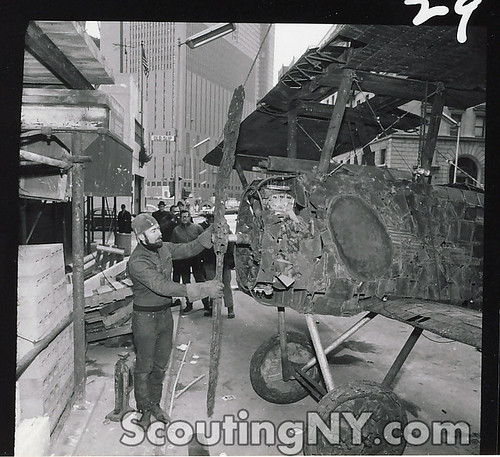
…rigged to a crane…
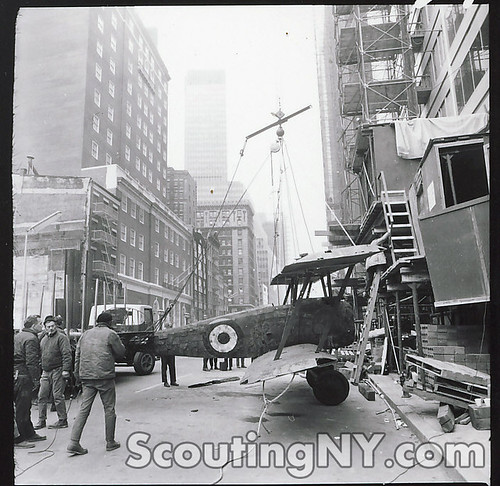
…lifted up 26 stories…
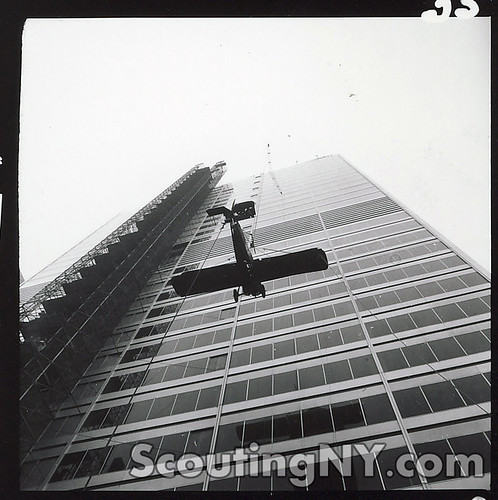
…and finally, dropped into its final resting place on the roof:
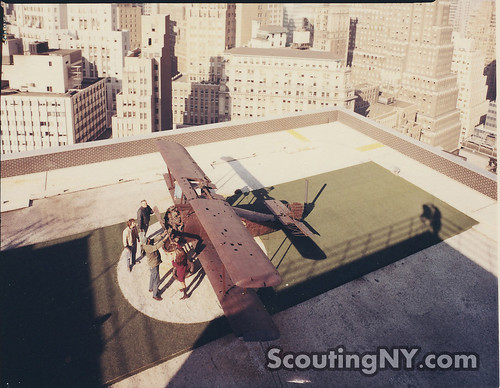
And, as you go up the final set of stairs to the roof access door…
…a number of paintings of the Sopwith Camel biplane in action line the wall:
Getting to see the plane up close was a thrill, but the real pleasure was in meeting Robert Kaufman.
Mr. Kaufman has been in this game for quite some time – he took over the company after serving in World War II – but man did his face absolutely light up when we started talking about the plane. As we continued to talk about the little additions to his other buildings, he was glowing with pride.
After meeting endless numbers of soulless developers while scouting, you come to believe that this must be how the world works: every inch of square footage is a dollar sign, and if you don’t maximize this to the penny, something’s wrong with you. And who the hell really cares what it looks likey? And then you meet someone like Mr. Kaufman.
I think there was only one question that he didn’t particularly like answering, and frankly, I only asked because I need a quote: “Why?”
Because isn’t it obvious?
-SCOUT





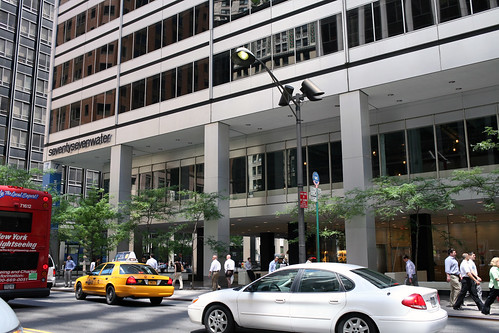
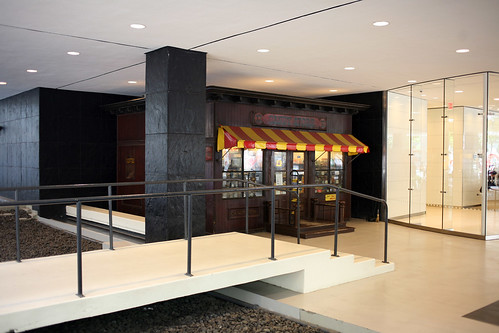
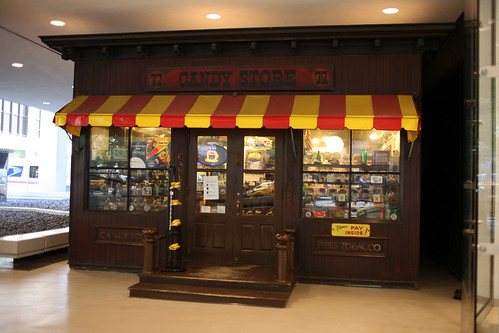
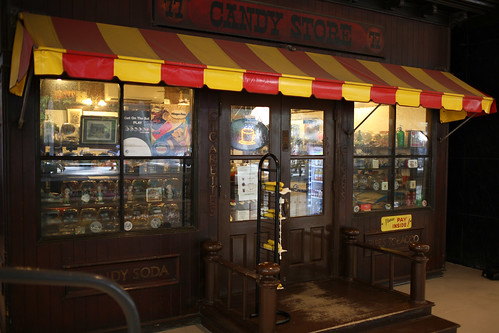
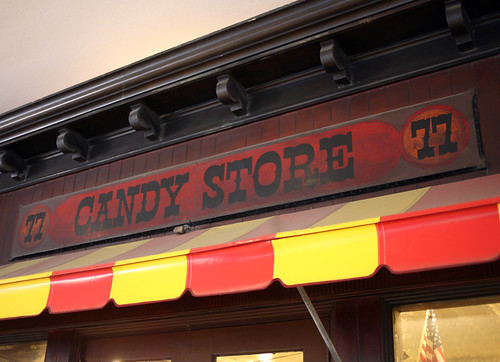
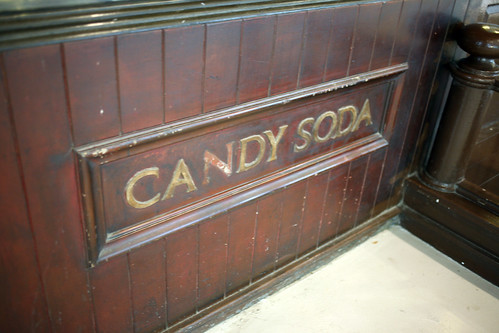
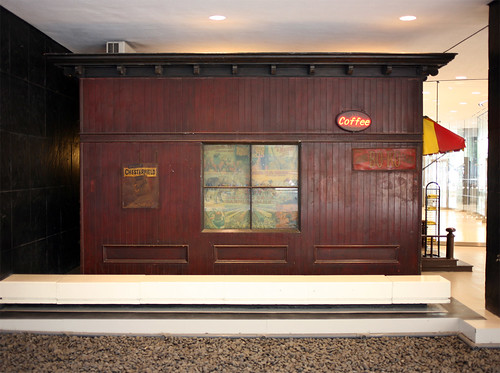
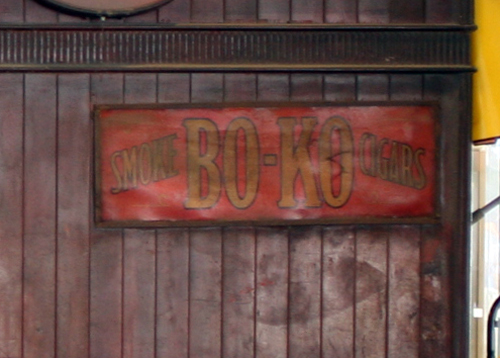
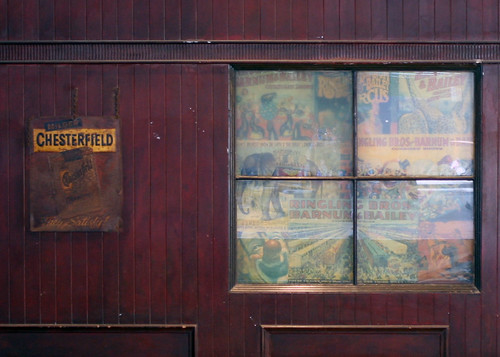
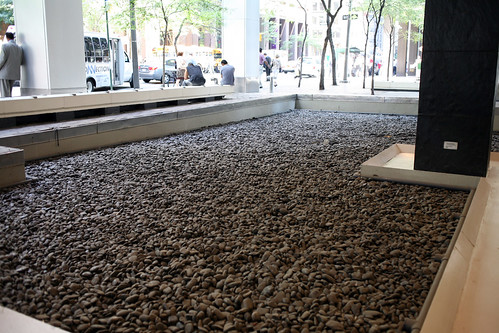
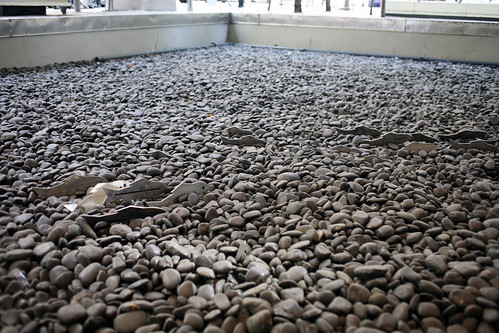
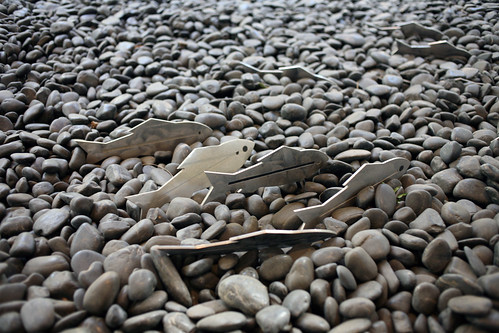
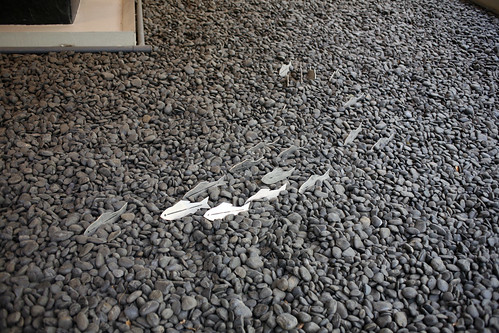
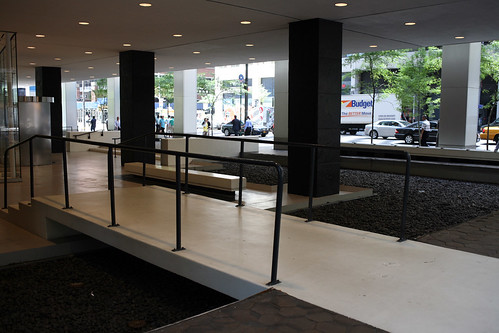
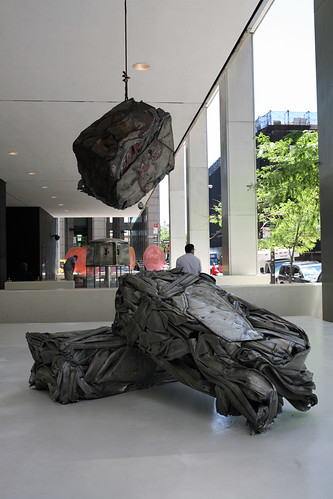
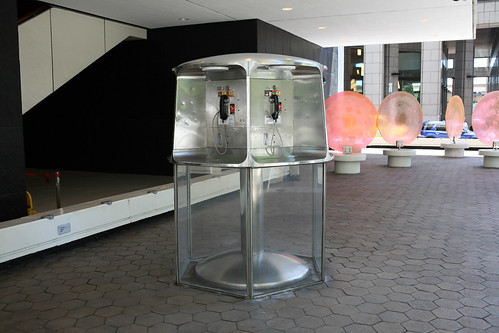
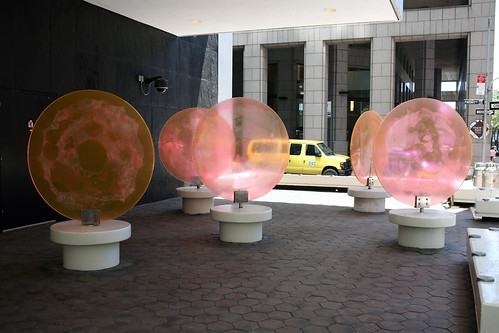
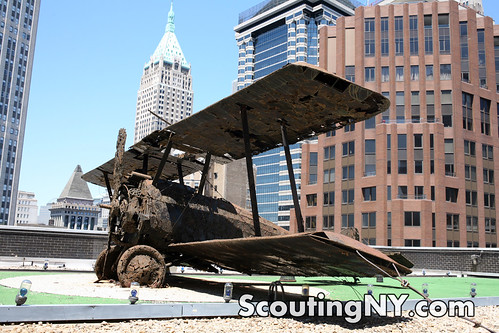

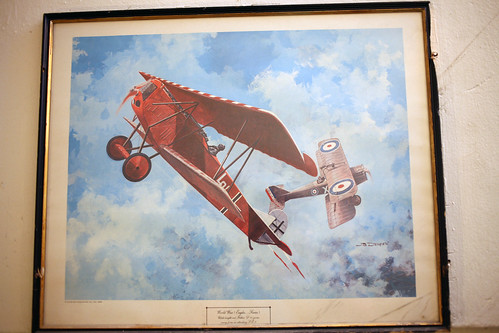
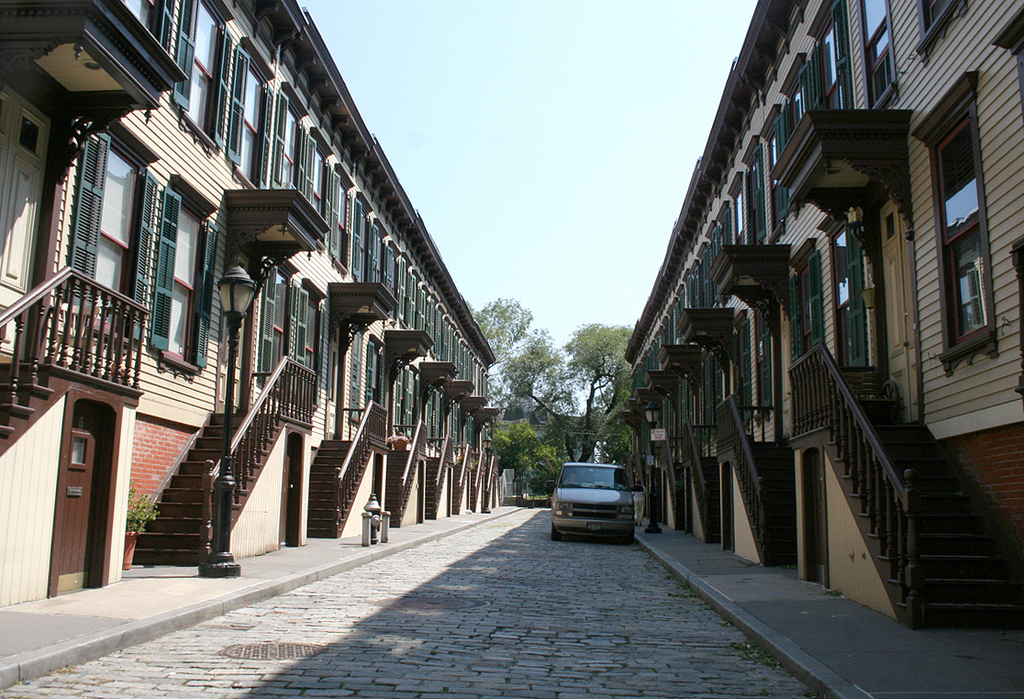
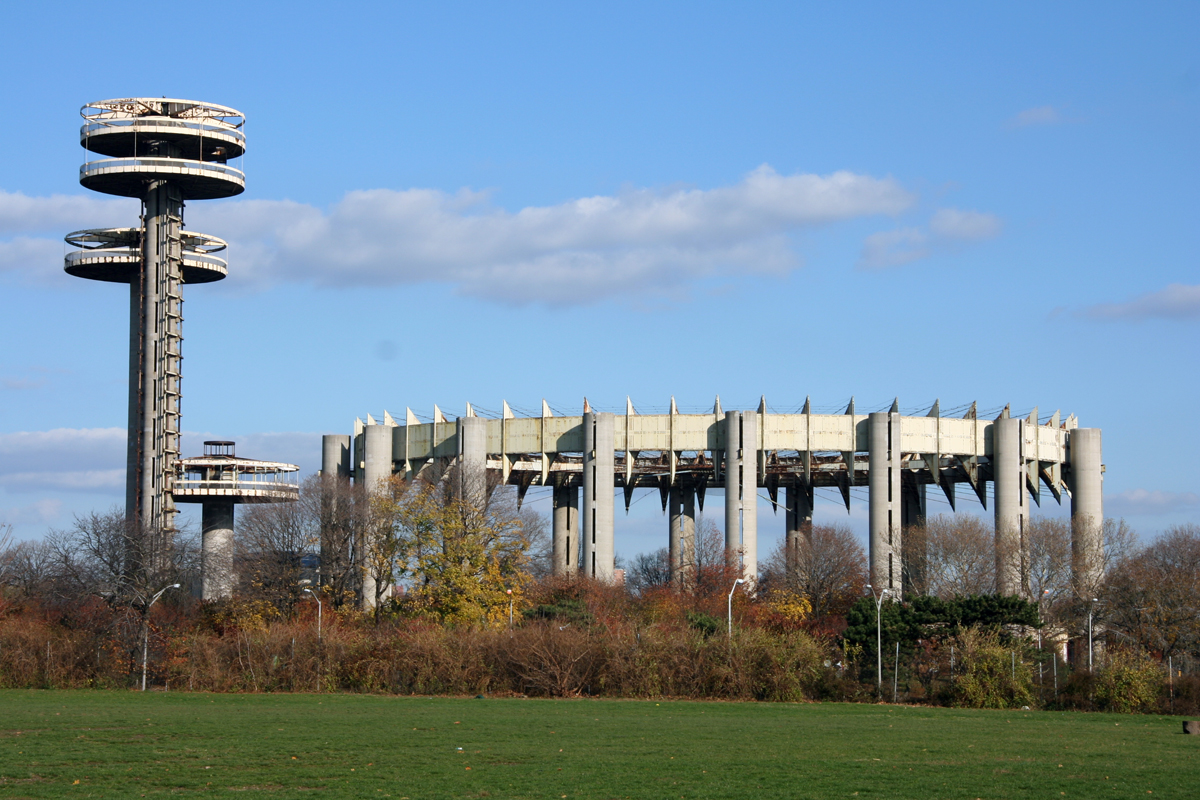
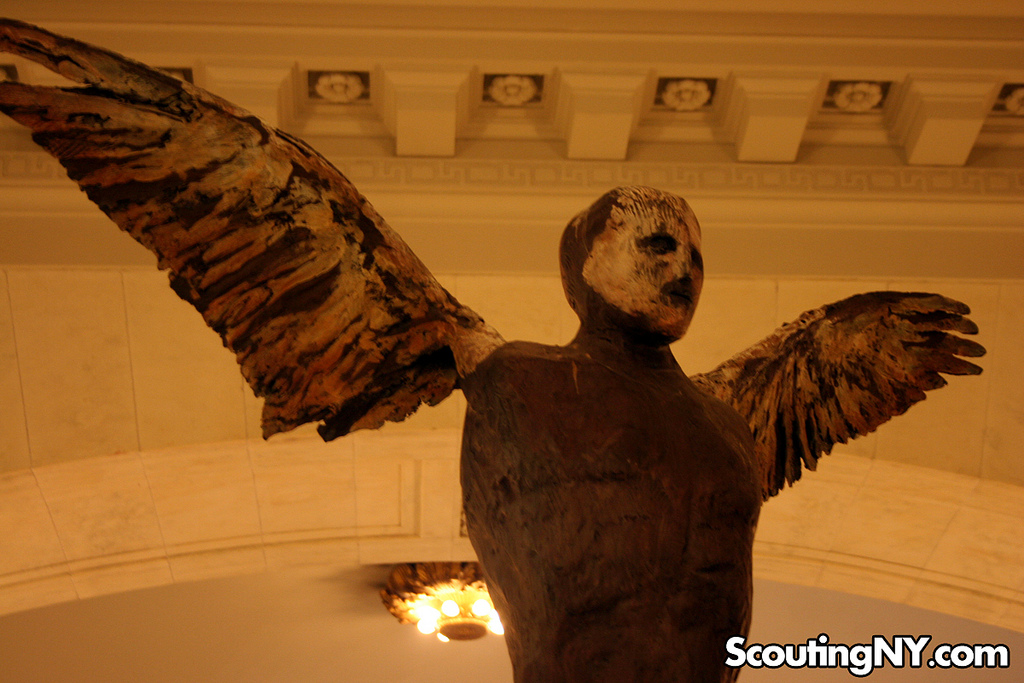
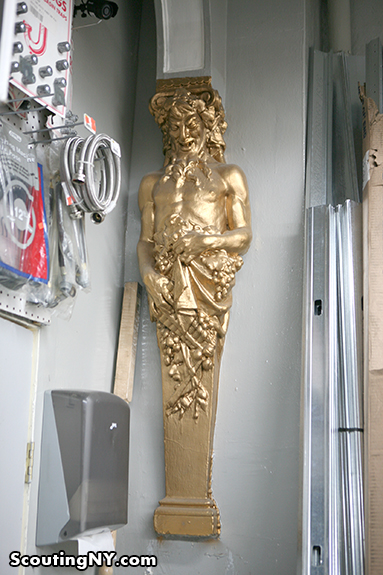
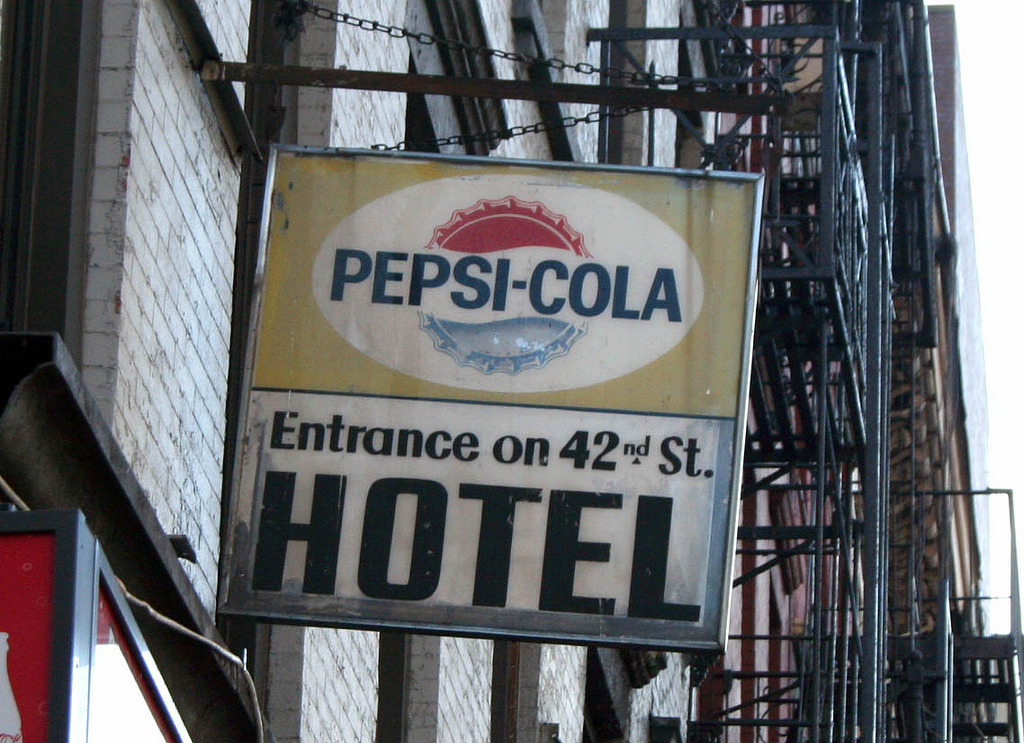
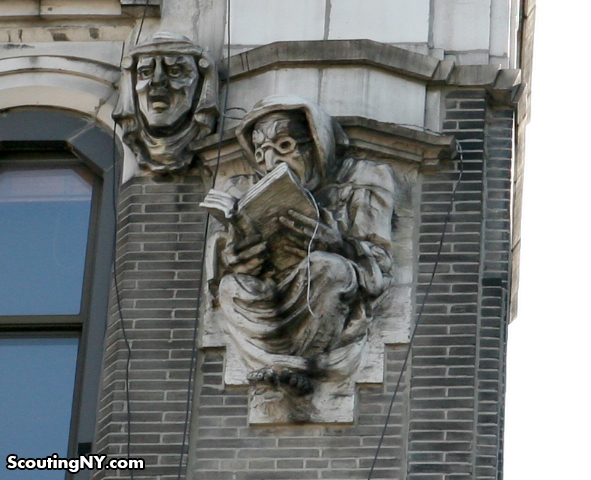
Thanks for covering this! I used to be able to see the plane when I worked at One New York Plaza but couldn’t find any information about it at that time.
I love that there are paintings of the plane on the way up to the roof – it seems like people would be going up there too infrequently to bother with embellishments like that.
Tying in with the aviation theme: three of his other buildings are named after aircraft: 767 Third, 757 Third, 747 Third.
P.S. Typo: “looks likey” should be “looks like.”
Love this stuff, now it wants to make me check for such things in my own city.
No pics of the inside of the candy store? 🙂
Thank you for the follow up story. I agree with Bill’s comment about the biplane pictures; a perfect complement to the rooftop sculpture. As to Mr. Kaufman; he sounds like a great guy. However, I would like to point out that a significant number of New York Real Estate Developers/Operators are collectors and major patrons of the various Art Museums in and around the City. This should not be surprising; since both real estate and art are considered “real assets”. As you probably know, there are a lot of office buildings with major pieces of artwork adorning their lobbies and other public areas of their properties. Unfortunately in our post 9/11 world, fewer and fewer people will get to enjoy the experience.
What an intriguing place!!
Great post! This is not only a prime example of juxtaposition but also a bit of nostalgia and creativity where you would least expect it – in the heart of the Financial District.
If you’re looking for more hidden treasure in the area, check out this little alleyway nearby: http://newyorkdailyphoto.blogspot.com/2010/08/just-around-corner.html It went through a huge transformation in the 1980s from a graffiti-lined drug-dealing center to a picturesque pedestrians-only walkway with granite paving blocks and bluestone sidewalks.
That’s what makes NYC such a wonderful & special place! Love it!
Hi Nick, I just found your blog today on Racked NY and am in the process of reading it start to finish. I love learning about new/old and odd places in NYC!!!
LOVED to hear about a heart-of-gold developer. I’m studying to be a developer myself, but have never identified with the “build a parking lot on Old Faithful for our upcoming Yellowstone Mall” crowd.
The airplane in the painting isn’t a Sopwith Camel: it’s a contemporary, the S.E. 5 (see the caption at the bottom of the painting) http://en.wikipedia.org/wiki/Royal_Aircraft_Factory_S.E.5 Remedial reading: Biggles http://en.wikipedia.org/wiki/Biggles , who flew a Sopwith Camel in the book series.
Man you’re awesome.
My grandparents, pearl and Dave Waxman ran the candy store in the early 1900s. Grandma pearl recently passed and I would love to learn more about the candy store. Can advise on how to?
funny that i just accidentally stumbled upon this page. i used to work in this building and was puzzled by this stuff. thank you for the very interesting information.
I worked as a Wall Street ‘runner’ during the summers around 1970, and remember finding the odd candy story under the building. But at that time, there was something even odder beside it: a working soda machine dressed up in naugahyde to look like a monster. When you put your money in its ear, it started to laugh. To select a soda, you punched one of a row of eyes. The bottle pushed partway out its mouth, but to get it you had to lift its tongue and reach inside. The opener was up its nose, and when you opened the bottle, it stopped laughing.
I worked for Bill Tarr at the time and one of the guys who built the plane in his workshop on Greene street,I was there when it was hoisted on top of the building..veey exciting..